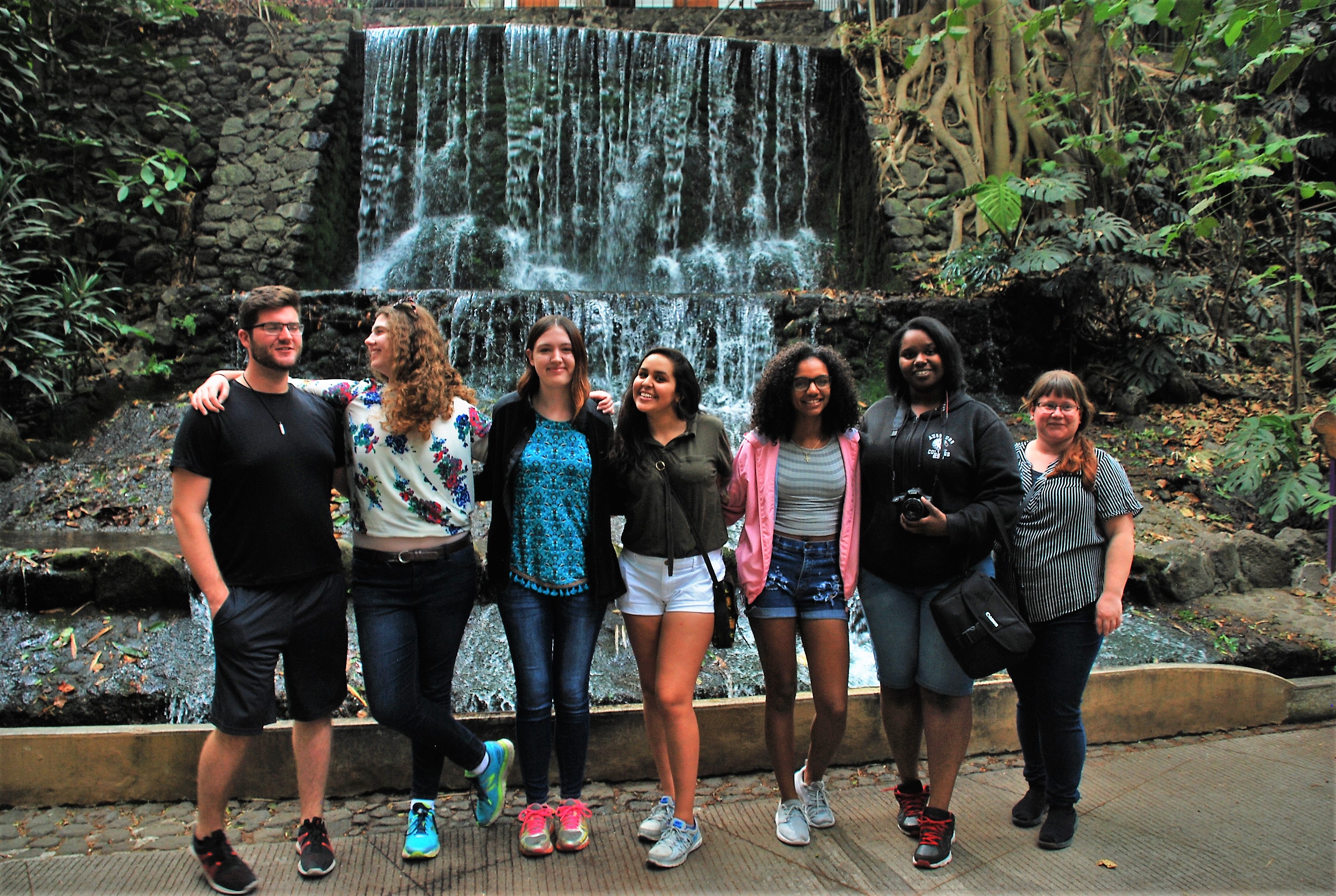Today we visited the Parque Ecologico in Chapultepec, MEX, with a small class of biology students. Located in the center of urban center of Cuernavaca, this pristine stretch of land is a protected natural area. This national park is like other various national park reserves and conservatories in the United States. It was quite interesting as we were able to connect another area to Cuernavaca’s water sources. The ravine which runs through Chapultepec comes from an underground aquifer and helps supply water to Morelos’ farms. Within the park, it feeds the flora and fauna which thrive there. This excursion illustrated the biodiversity of both plants and animals within Mexico and their importance to the world’s ecosystem.
The animals were caged in large enclosures allowing them to live in a more natural habitat. The birds were roaming around, able to fly and go as they pleased. Male peacocks display their very colorful wings to attract potential mates. This idea of allowing nature to flourish as we strive to understand it is an important piece of this gem. There is this unspoken feeling as you stroll through the river and streams and as you look up and see birds flying up above you. There are many springs that exist throughout Cuernavaca. Having this spring located conveniently in the city made this park even more special and inviting to the public and community here. There is a sense of liberation and the ability to be completely and openly free. Despite this wonderful and uncrowded space there are those who would rather have a zoo or something with more attraction and glitter.
Within today’s world, many different ecological and environmental challenges have arisen. These include climate change, deforestation rates and species extinction. Approximately 130 species become extinct every day. Despite these statistics and the overall awareness of the problem, this protected area which strives to inform its population, remains largely underacknowledged. This is similar to what we heard in our tour of the ravines. The people in this community know there is a problem, but they don’t know where to go with that knowledge, and this is something we can all relate to. There is a lack of resources, as well as investment from their own government within these issues.
We also had the opportunity to explore the various butterfly and bird habitats. Butterflies and the conversation of these species were extremely crucial within the ecosystem. Our guide presented a tree called “amate” which has many species. We were introduced to three amate species: there is blanca (white), negro (black) and amarillo (yellow). This species roots can adapt to any surface, around other plants, rocks, and often have their roots systems spread through steams.
Our guide works as an intern for one of the local universities nearby. With her knowledge and experience, she taught us about the butterflies at various stages of their lives: from egg, to larvae, pupa (it’s chrysalis stage), and the adult stage. She explained the importance of not touching butterfly wings. Touching a butterfly or moth wing strips the wing of microscopic scales which help them to fly. Without scales, many butterflies may be rendered unable to fly. Butterflies are one of the most important contributors to pollination in our ecosystems.
This experience really allowed us to get up close to this beautiful land and its creatures and learn more about the world and Cuernavaca from a global perspective. We also were able to gain more respect and admiration for the people here that are actively preserving their own culture and land. It opened our eyes as to how we as students from the United States can further educate ourselves and grow a deeper sense of appreciation for the world we inhabit. We must respect and treat it as such for the sake of our future.
Bibliography:
Parque Estatal Urbano Barranca de Chapultepec. (2017, March 23). Retrieved February 02, 2018, from http://sustentable.morelos.gob.mx/anp/peubch Publication of the Decree: January 6, 1965, copy No. 2160 published in the Official Newspaper.



